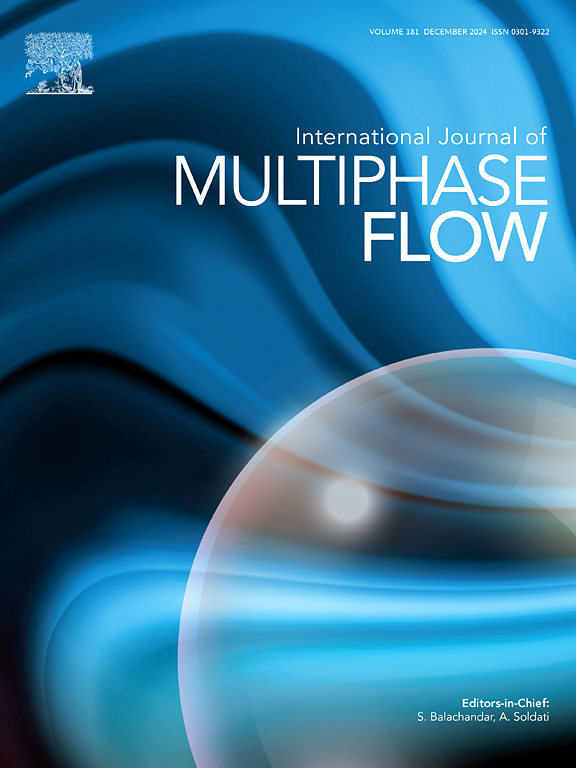Identification of high void fraction flows using conductivity measurements and machine learning techniques
IF 3.6
2区 工程技术
Q1 MECHANICS
International Journal of Multiphase Flow
Pub Date : 2025-01-25
DOI:10.1016/j.ijmultiphaseflow.2025.105145
引用次数: 0
Abstract
This study explores the application of a droplet-capable conductivity probe (DCCP-4) combined with a Kohonen self-organizing map (SOM) for identifying flow regimes in high void fraction flows. The DCCP-4, designed to accurately measure the electrical conductivity of multiphase flows, is adept at capturing the intricate details of droplet behavior within these systems. The research demonstrates the effectiveness of the combined DCCP-4 and SOM method to identify different types of annular flows. The integration of the DCCP-4 probe's precise measurements with the SOM's robust clustering capabilities results in an advanced methodology for flow regime identification. The unsupervised neural network is used to categorize high void fraction flow data into three
flow regimes. High-speed camera footage is also employed to visually corroborate the findings. Statistical distributions related to droplet, bubble, and ligament measurements are also presented to further highlight the differences between the flow regimes. This approach not only enhances the accuracy of flow characterization in multiphase systems but also provides valuable insights into the underlying physical phenomena driving these flows. The findings have significant implications for optimizing industrial processes where high void fraction flows are prevalent to safety, such as in chemical reactors, oil and gas pipelines, and nuclear reactors, by improving monitoring and control strategies.

利用电导率测量和机器学习技术识别高空隙率流体
本研究探索了液滴导电性探针(dcpc -4)与Kohonen自组织图(SOM)相结合的应用,以识别高空隙率流体的流动形式。DCCP-4设计用于精确测量多相流的电导率,擅长捕捉这些系统中液滴行为的复杂细节。研究表明,DCCP-4与SOM相结合的方法能够有效识别不同类型的环空流动。DCCP-4探头的精确测量与SOM强大的聚类能力相结合,形成了一种先进的流态识别方法。利用无监督神经网络对高含空率流动数据进行了三种流型分类。高速摄像机镜头也被用来从视觉上证实调查结果。与液滴、气泡和韧带测量相关的统计分布也被提出,以进一步强调流动形式之间的差异。这种方法不仅提高了多相系统中流动表征的准确性,而且为驱动这些流动的潜在物理现象提供了有价值的见解。这些发现对于通过改进监测和控制策略来优化工业过程具有重要意义,这些工业过程中,如化学反应堆、石油和天然气管道以及核反应堆中,高空隙率流动普遍存在于安全中。
本文章由计算机程序翻译,如有差异,请以英文原文为准。
求助全文
约1分钟内获得全文
求助全文
来源期刊
CiteScore
7.30
自引率
10.50%
发文量
244
审稿时长
4 months
期刊介绍:
The International Journal of Multiphase Flow publishes analytical, numerical and experimental articles of lasting interest. The scope of the journal includes all aspects of mass, momentum and energy exchange phenomena among different phases such as occur in disperse flows, gas–liquid and liquid–liquid flows, flows in porous media, boiling, granular flows and others.
The journal publishes full papers, brief communications and conference announcements.

 求助内容:
求助内容: 应助结果提醒方式:
应助结果提醒方式:


